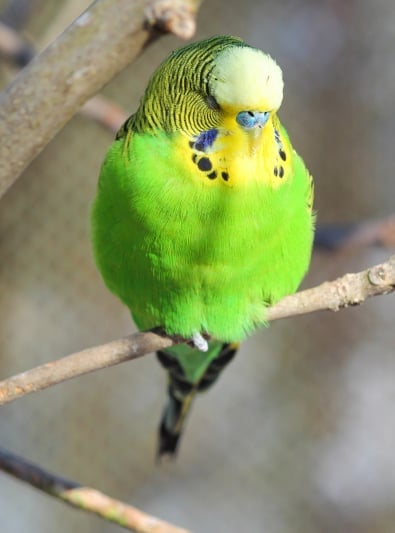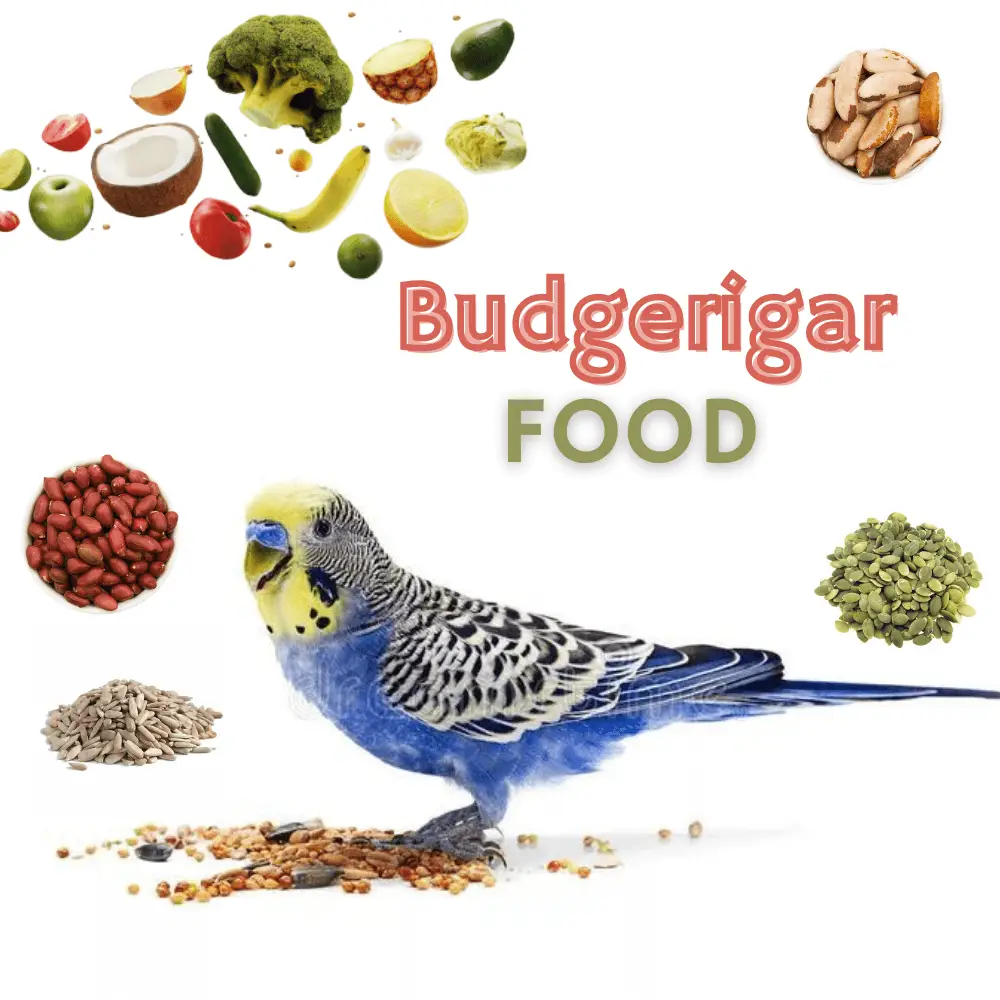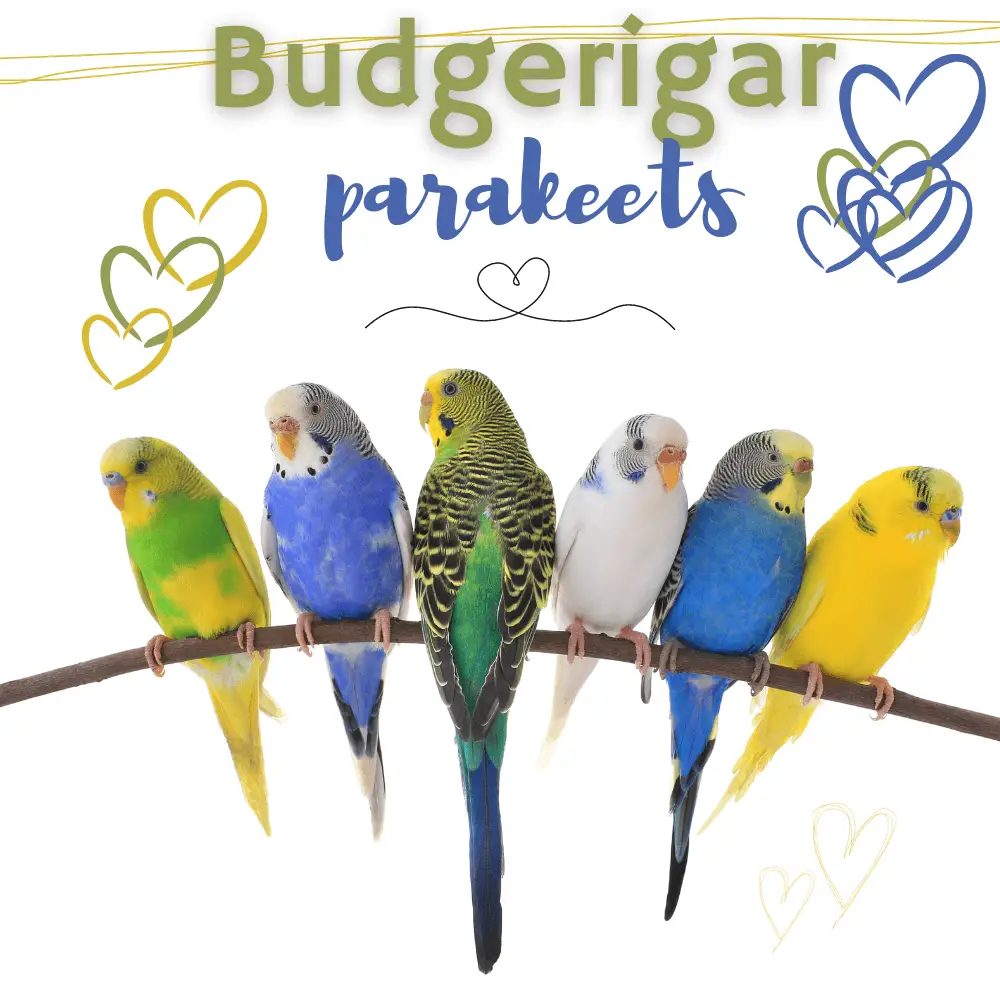Budgerigar Scientific name: Melopsittacus undulatus
| Family | Psittacidae |
|---|---|
| Kind | Melopsittacus |
| Weight | From 29 gr to 40 gr |
| Cut | 18 cm |
| Budgerigar lifespan | 12 years average life expectancy of the Budgerigar is around 12 years. |
|---|
Budgerigar habitat
The Budgerigar is native to Australia, more specifically from the open woodlands, meadows, and scrubland of the mainland.
Since its discovery in the mid 19 th century, this bird was imported all over the world, especially in Europe where it had to adapt to the climate.
History of the breed

The first description of the Budgerigar was made by the British ornithologist and naturalist George Kearsley Shaw in 1840.
The Budgerigar is the only species of the genus Melopsittacus, as well as of the Melopsittacini tribe.
This species of bird has been bred in captivity since around 1850.
Physical features
The name of the Budgerigar is a reference to the black undulations that characterize the bird. However, some individuals do not.
In the wild, the plumage of the Budgerigar is generally green with yellow tones on the head. But in captivity, the colors are much more varied.
There are multiple color mutations in farmed birds, but also in drawings. From 2 basic series, green and blue, 4 other variations are formed (green, blue, gray-green, and gray) giving rise to many other colors. The Budgerigar has an average wingspan of 30 cm.
Budgerigar Behavior
The Budgerigar is a very sociable bird that, in its natural habitat, evolves within large groups.
In captivity, she asserts her intelligence and her playful side. She can even learn to speak. It is important to ensure that she is stimulated and that there are regular interactions with other individuals.
Another personality trait to know about the Budgerigar: its tendency to gnaw and destroy objects, hence the need to surround it with natural materials to prevent the risk of intoxication.
Budgerigar Food

The Budgerigar is essentially granivorous and frugivorous. In other words, it feeds on seeds and fruits, but not all of them. Those which can be given to him are apple, pear, melon, watermelon, apricot, peach, mango, or even fig.
On the other hand, parsley, avocado, orange, and chocolate are among the dangerous and even fatal foods for the species. Cultivated cereals and germinated seeds make it possible to supplement the contributions.
budgerigar reproduction
sexual maturity occurs at the age of 6 months. It is nevertheless recommended not to let the bird breed before the age of one year.
The breeding period is between June and September. In the southern hemisphere, it begins and ends much later: from August to January.
The female lays between 2 and 10 eggs, which she then incubates for 17, 18, or 19 days. The feathers of the young bird appear one month after hatching.
Budgerigar Health
A Budgerigar receiving a balanced diet and whose environment is regularly cleaned and disinfected does not have much to fear on the health side.
If this care is insufficient, various diseases due to fungi or bacteria can appear as respiratory ailments caused by mycoses, scabies, salmonellosis…
Budgerigar is also prone to angel wing syndrome, favored by a diet too high in calories or deficient in vitamins D and E and manganese.
It follows a deformation of the wing, the end of which then tends to point towards the external sides. The bird thus partially or totally loses the ability to fly.
Do you have a healthy Bird? | Signs of a Healthy Budgie
SOURCE: Alen AxP
Way of life
Although small, the Budgerigar requires space: a large cage, even an aviary, or even an entire room, depending on the number of individuals.
Inside, the basic accessories to be made available are drinkers and feeders, the contents of which must be renewed regularly.
The containers themselves must be cleaned daily. They are all to be placed so as to be easily accessible while being protected from droppings.
Regarding the perches, we will favor those made of natural wood and branches (pear, apple, birch, willow, etc.). The whole is decorated with various elements allowing to occupy the birds: rings, ropes, etc.

